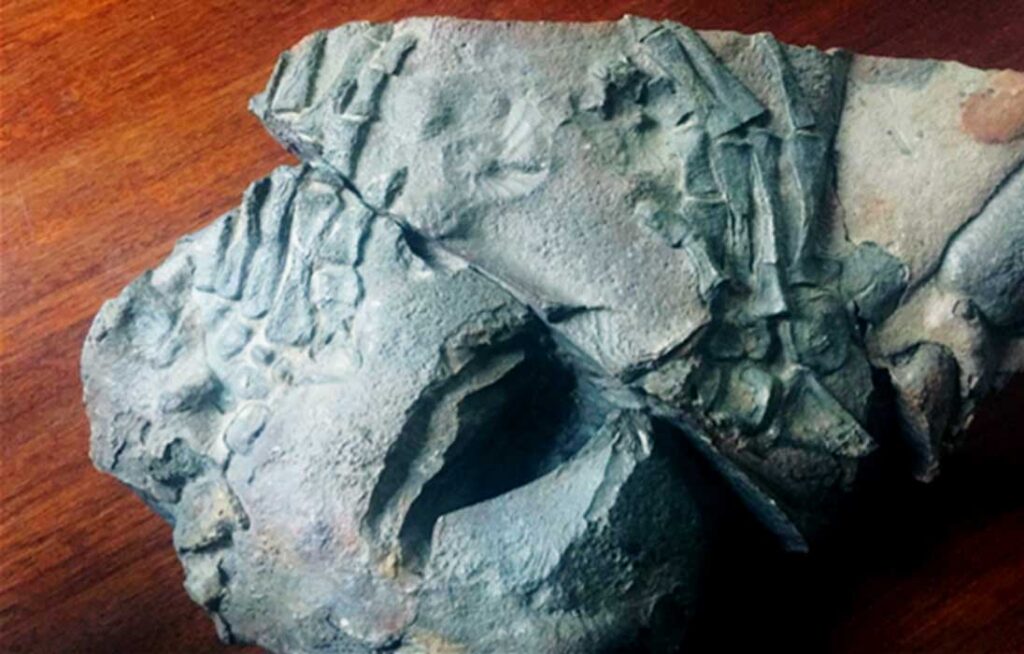
In 2016, a telephone interview with an artefact collector led me to uncover a scientific conspiracy of Biblical proportions. Professors are the high priests of our technology driven society, but as you will see, sometimes the letters behind their names serve only to disguise a highly unscientific hidden agenda.
Backstory
In October 2016, I led a documentary film crew to a highly-secured property in the mountains north of Bogota, Colombia to interview Professor Jamie Gutierrez-Lega, Colombia’s leading Architectural and Industrial Designer and owner of the Gutierrez Collection, the world’s most controversial Pre-Colombian artefact collection. After the interview, he led me to a large, dark and dry safe-room hidden in the bowels of his sprawling hillside property.
Standing in a kaleidoscope of Pre-Colombian artefacts; gods, heroes, warriors, burial urns, charms, jewellery, tools and clay pottery. Dr. Gutierrez urged me to sit down. He is 84 years old, yet he pulled up a chair like a teenager with passion flaming in his eyes. At the centre of the room, on an ornate wooden plinth, was a large charcoal grey fossil.
I noticed fossilised seashells surrounded by what appeared to be long slim bones. The professor pointed to these and said, ” These are knuckles Ashley, and look here, finger joints!” Every one of my five senses told me I was looking at two human hands, but this fossil was dated to 130 million years old. A paradox, to say the least.

Scientists claim this 130 million years old fossil is a pair of human hands. Author provided.
From time to time archaeologists and palaeontologists discover objects in seemingly impossible contexts that don’t fit their models of how they think things happened to get us here. Often categorised as OOPArts (Out-of-place Artefacts) by cryptozoologists, ancient astronaut theorists, Young Earth creationists and those interested in the paranormal, they are presented to support notions of vanished ancient civilisations with knowledge and technology more advanced than that of modern times. Scientists argue that OOPArts which are not hoaxes are simply misinterpreted. But to supporters, they are hard evidence that mainstream science is covering up the truth, either deliberately or through ignorance.
Having over 20 years of experience, I have developed a simple yet highly effective method for examining and determining the validity of history-challenging artefacts. Considering 99.9% of OOPArts are elaborate hoaxes or misinterpretations, I approach them wearing full-body sceptic armour. Before asking the owners any questions I familiarise myself with their form, texture, shape and colour. After this brief period of contemplation, I begin gathering what is inevitably bias data by asking the owners some simple questions; when, what, how, who, why and when?
After correlating these basic facts and figures about the artefacts, I venture outwards and question the circumstances and people surrounding the moment of discovery.
A 130-million-year-old Human Fossil?
A highly accomplished and respected professor was asking me to consider that humans were as we are today – 130 million years ago. I was perplexed, a little mystified, intrigued, and increasingly pissed off, all at the same time. Was the professor making a fool of me? Were the camera guys rolling in secret?

Ashley interviewing Professor Jamie Gutierrez-Lega. Author provided.
I examined the professor’s high-quality replica of the fossil, which he personally excavated in
1999 near Bogota, Columbia. He found it in Cretaceous rock dated to around 130 million years old and he showed me black and white photographs of himself with the fossil at a really dramatic mountain location. However, after a very frustrating hour, the predictable chink appeared in the story.
I asked him; “which university had confirmed the fossils were 130 million years old, and that they were actually human hand bones.” The professor replied: “When I announced the discovery in 1999 two professors, Dr. Hovind and Dr. Baugh from a historical organisation in Texas appealed to date the stone. They came to Colombia and I signed the fossil out to them and they still have it.”
This caused me to shudder. I had come across these characters on previous OOPArt investigations. Kent Hovind is an Evangelist who lives in Alabama, US and works as a Christian theme park operator. This scientist is an advocate of Young Earth creationism and was recently convicted of tax-related crimes and sentenced to 10 years imprisonment.
Carl Baugh is a Baptist minister who claims to be an archaeologist with a Ph.D. from the California Graduate School of Theology in Los Angeles. Baugh is a tireless proponent of the claim that human footprints appear alongside dinosaur tracks in the Paluxy Riverbed of Glen Rose, Texas. He is the founder and Director of the Creation Evidence Museum of Texas in Glen Rose where he exhibits OOPArts as evidence that Evolutionary Theory is wrong.

Exhibit at the Creation Museum, Petersburg, Kentucky showing dinosaurs and humans living together. Author provided.
These two scientists believe that man lived at the same time as dinosaurs because God, said that He created man and land animals on Day 6 (Genesis 1:24-31). Since 2002, these two strict Young Earth creationists have touted Professor Gutierrez’s human-hands fossil as a pair of human hands in support of this idea. It was late in the day and I decided to keep my knowledge of these two scientists to myself, for the meantime, and asked my assistant to cover the bones with her hands. Of course, they fitted perfectly.

Covering the bones with human hands – they fitted perfectly. Author provided.
Based on aesthetic values alone one could be forgiven for believing this fossil is a pair of human hand bones. Unfortunately, this sentiment is as far as many people get, and with no further questioning they blindly accept that this fossil is human. To a casual observer with little knowledge of evolutionary theory or the animal kingdom, the fossil can only be human hand bones. But the bones have a compelling alternative interpretation.
Scientists Vs Young Earth Creationists
The primary reason OOPArts exist is because Young Earth creationists and cryptozoologists don’t read scientific papers and update their belief systems according to the latest research. In this case, proponents of the human hands theory haven’t accounted for the conflicting interpretations of three biologists and palaeontologists who biologist Glen J. Kuban brought together in 2007 to directly challenge the human hands theorists.
Dr. Peter Prichard: Herpetologist and author of the Encyclopedia of Turtles.
Dr. Peter Meylan: Marine reptile researcher at Eckerd College in Florida.
Dr. Walter Joyce: Turtle fossil expert at the Yale Peabody Museum division of Vertebrate Palaeontology.
These three scientists agreed that the flipper of a sea turtle resembles that of a human hand; they both have the digital formula (2-3-3-3-3), that is, the thumb has two phalanges and the four digits have three. In addition, both humans and sea turtles have two rows of four carpal bones and the thumb of both sea turtles and humans are shorter than the other digits.
Dr. Walter Joyce was not only sure that the bones belonged to a sea turtle, but he identified it as being of the superfamily Chelonioidea, which includes green turtles, loggerheads, and hawksbills. The principal observation underpinning the sea turtle hypothesis, is that the pisiforms on sea turtles are circular and protrude, whereas human pisiforms are oblong and don’t protrude.

Chelonioidea sea turtle. Author provided.
The following two photographs highlight this primary difference between human hands and sea turtle flippers. The following examples, taken from Kuban’s report, are not likely from the same genus or species as the fossil bones, but they illustrate the same structural features.

The pisiforms on the fossil are circular and protrude. Human pisiforms don’t protrude.
In light of these very clear scientific observations, human hands advocates must now provide detailed descriptions of the fossilised bones detailing the individual shapes and sizes of each of the ten digits. This data set must then be compared to both human hands and various Cretaceous sea turtle flippers. This is the only acceptable way in which a rational thinking human will, or should, accept the assertions of the human hands proponents.
Conclusions
Professor Gutierrez’ 130-million-year-old ‘ fossilised human hands’ are actually sea turtle flippers. I have since informed the professor of my findings and he was not that surprised. I must make it clear that he doesn’t agree with the creationists interpretation. No. The professor’s theory is something else altogether! My complete interview with Professor Gutierrez and his OOPArts will be aired in a new documentary series next year.




